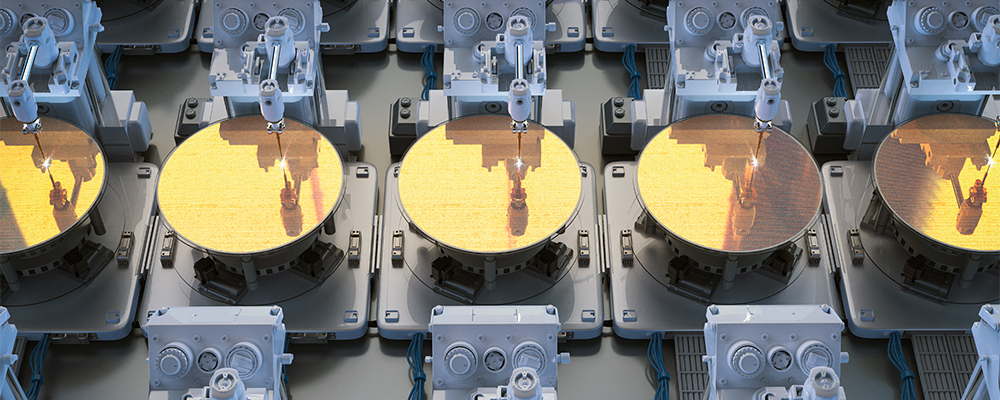


As semiconductor manufacturing continues its relentless drive toward smaller, faster, and more powerful devices, the challenges of maintaining clean environments have evolved. While traditional air filtration in cleanrooms has focused primarily on eliminating airborne particles, the shift to sub-20 nm process nodes has exposed a more insidious threat: Airborne Molecular Contamination (AMC).
AMC consists of gas-phase chemicals that are often undetectable with conventional particulate filtration. They include acids, bases, condensable organics, dopants, and trace metals—all of which can significantly impact sensitive fabrication steps. These contaminants can originate from a range of sources including outdoor air pollution, process equipment, off-gassing building materials, and even cleanroom personnel.
This is where carbon media filtration becomes essential. Unlike HEPA or ULPA filters, which trap solid particulates, carbon filtration targets vapor-phase molecules. By using specially designed adsorbents and chemisorbents, these systems remove harmful gases before they can damage wafers, equipment, or processes.
Why AMC Control Is Critical in Advanced Semiconductor Manufacturing: Protecting 450 mm Wafers and Sub-10 nm Devices
The significance of AMC control became apparent in the 1990s with the rise of chemically amplified resists and advanced lithography. Today, with wafer sizes approaching 450 mm and device geometries shrinking below 10 nm, the effects of AMC are no longer marginal—they're magnified. For instance:
Molecular acids such as HF, HCl, or SO₂ can corrode exposed metal lines.
Bases like ammonia or amines can neutralize photoresist chemistry, leading to poor pattern fidelity.
Condensables such as siloxanes can create haze on photomasks and scanner optics.
Dopants including boron and phosphorus can unintentionally alter the electrical properties of semiconductor devices.
Understanding AMC in Semiconductor Cleanrooms: Key Sources, SEMI F21-2016 Classifications, and ppt-Level Limits
The term Airborne Molecular Contamination (AMC) covers a wide range of chemical contaminants that can be present in cleanroom air. Many factors can contribute to the overall AMC load in a cleanroom:

The industry now relies on AMC classification standards, such as SEMI F21-2016, to segment contaminants by chemical behavior and assess their impact on processes. According to IRDS guidelines, allowable concentrations of some contaminants are now set in the parts-per-trillion (ppt) range—a level that demands the most advanced detection and control technologies available.
Layered AMC Filtration in Semiconductor Fabs: MAUs, RAUs, and FFUs for VOC, Acid, and Base Removal
Modern semiconductor fabs employ layered filtration strategies that combine carbon media filtration with localized containment. Three primary systems play key roles:
Make-Up Air Units (MAUs): These remove AMC from outdoor air entering the cleanroom. Filtration targets wide-ranging pollutants including industrial gases, vehicle exhaust, and environmental VOCs.
Recirculation Air Units (RAUs): These continuously cleanse indoor air, targeting AMC released by process tools, materials, and structural elements.
Fan Filter Units (FFUs): Installed above process tools or within mini-environments, FFUs provide point-of-use carbon filtration to protect sensitive process steps like DUV/EUV lithography or metrology.
These systems often use specialized filters in stages—first removing VOCs, followed by bases, and then acids—to ensure comprehensive AMC control. This modularity also helps optimize filter life and energy efficiency.
AMC Filter Media Technologies Explained: GAC, IX Resins, ALNF Composites, and Impregnated Carbon for Cleanroom Contamination Control
Filtration effectiveness is not only about the airflow path but also the media inside. Today’s AMC filters use combinations of:
Granular activated carbon (GAC)
Impregnated media
Ion-exchange (IX) resins
Adsorbent-loaded nonwoven fiber (ALNF) composites
Global AMC Standards for Semiconductor Fabs: SEMI, IEST, IRDS Guidelines and Molecular-Level Filtration with Carbon Media
The push for stricter AMC control has been driven by global collaborations through organizations like SEMI, IEST, and IRDS. These groups now issue formal guidance on acceptable AMC concentrations by process type, including lithography, diffusion, wet etch, and gate formation. In many cases, failure to meet these thresholds results in yield loss, tool damage, or even cross-contamination between tools and process areas.
Cleanroom environments are now engineered not just for particulate cleanliness (ISO Class 1–5), but also for chemical cleanliness at the molecular level. This dual objective makes carbon filtration a cornerstone of a contamination control strategy.
Essential AMC Control for High-Yield Manufacturing: Filtration Solutions for Semiconductor, Display, and Battery Facilities
Controlling AMC is no longer optional—it's a necessity for any high-performance, high-yield manufacturing environment. As semiconductor, display, and battery technologies become more complex and sensitive, so too must the filtration systems that protect them.
Explore American Air Filter’s AMC gas-phase filtration solutions, and partner with us to build a cleaner, safer, and smarter future. Contact an AAF representative to discuss the best filtration strategy for your facility's needs.